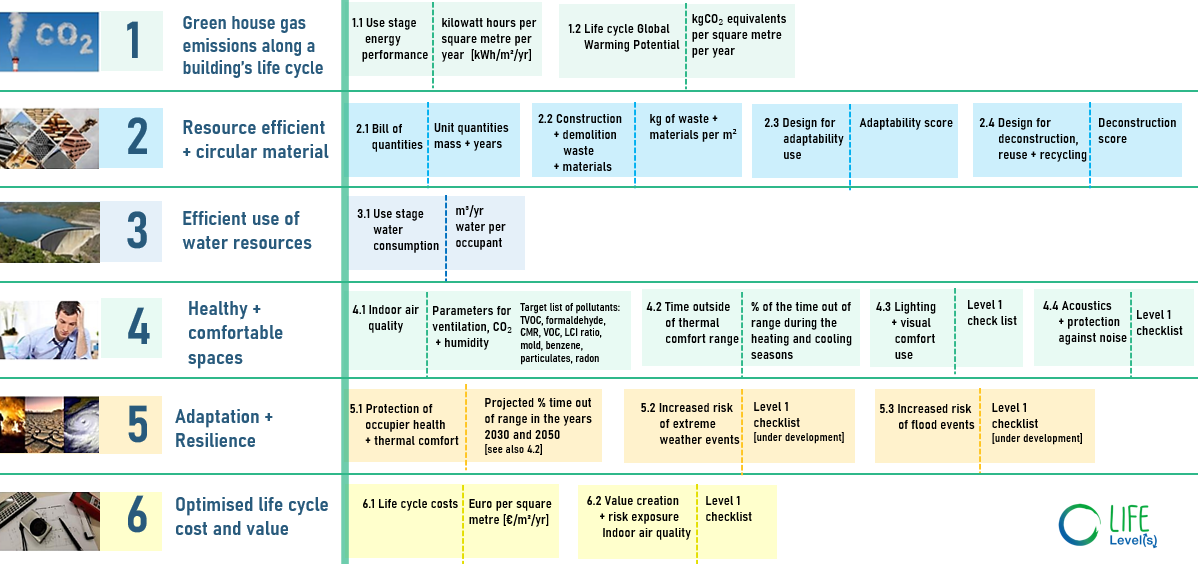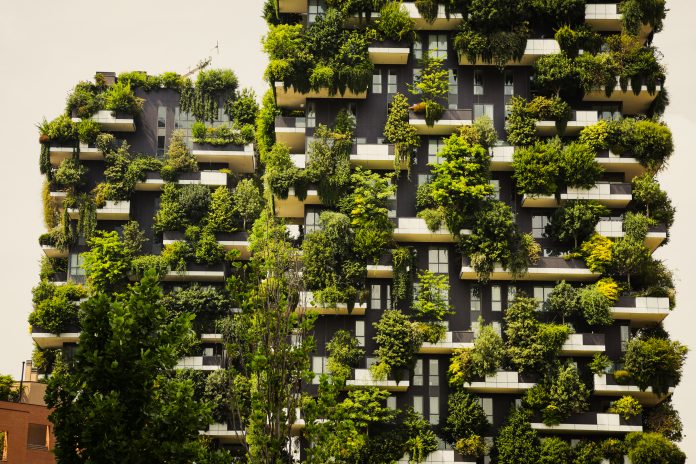Borja Izaola, Project Manager from GBCe (Green Building Council España), tells us what we need to know about sustainable buildings
Imagine a different old building. Old, because it has stood since 1944. It has provided comfort to three generations. It has adapted to host new devices, uses and lifestyles, from the incandescent light bulb to the LED, from no telephone line to wireless internet, from coal-burning to photovoltaic heat pumps. Different, because internal components and partitions are being robotically disassembled; new pieces are inserted as plug and play. New functions and services are being installed to create a self-cleaning, auto-adaptive and impact-free long-term living space.
Rainbow-collared circular economy builders collaborate with social and environmental experts on-site and remotely. Real-time metabolic data synchronises with regenerative measures locally and across the extended footprint of the value chain. Sustainability is no longer ambiguous, but measured and monitored with specific KPIs – no greenwashing. The building life span is planned to 2100, a second chance for all. And the aim of this? This building pays back the impacts done in the past and improves the quality of air, water, soil and society in the future.
No greenwashing
So where does this begin? The new EU wide building reporting tool: the Level(s) Framework. Level(s) is a toolkit of 16 indicators based on lifecycle thinking, human and environmental health and climate adaptability. It is a reporting framework to harmonise concepts and approaches and thus provide a common language across Europe for all buildings within the circular paradigm, from early design to execution to use phase and beyond. Level(s) offers an opportunity to engage, whether you are a designer, a manufacturer or a developer. The framework is also a learning platform to update your know-how on resource efficiency, recyclability, indoor air quality (IAQ), risk-proof valuing (LCC) and resilience. Ideas are supported by measurements, using consistent methods that lead to better decision-making and recommendations. Level(s) offers a way to fully describe and prescribe your asset, simulate its performance in multiple areas and check alternatives before investing, burning and exhausting.
Sustainable building associations from eight EU countries deeply involved in the development of the framework are already aligning their certification schemes with Level(s) in the LIFE levels Project. The six macro-objectives and 16 KPIs were compared against certification schemes, such as DGNB System, BREEAM-NL, HQE-certivea, the Irish Home Performance Index, the Spanish VERDE and others, with the aim of ensuring the certification schemes are consistent. Level(s) will become the primary tool for designing buildings under a lifecycle approach in the EU.
The status and availability of quality data to run Lifecycle Assessment (LCA) calculations were reviewed: more harmonised data and Environmental Product Declarations are on the way. The readiness of Public Procurement to award tenders under these criteria and run policies supporting reusability, health and adaptation metrics are being stimulated: stakeholder exchange webinars, interviews with the front runners and a best practice guide to Green Public Procurement are available. Specific capacity building programmes on LCA, LCC and IAQ for procurers, manufacturers and professionals are ready to launch: the Irish and Finnish partners are already offering these.

What will the building sector look like if it follows this vision?
So, we have a reporting tool capable of leading a vision for sustainable, resilient and healthy buildings. What will the building sector look like if it follows this vision? What will buildings and cities look like? How will human societies and their environment adapt to change?
Change is a core driver of life. Cities and buildings are human attempts to create and update conditions suitable to comfortable human life. But humans in the last two centuries have exhausted fossil energy that took the Earth millions of years to produce. Our industries have reshaped the surface of the planet at an almost tectonic level. Our waste has contaminated our oceans and our atmosphere. The sixth mass extinction is underway. In Europe, the building sector is responsible for half of all extracted materials, half of total energy consumption, one-third of water consumption and one-third of waste generation. This situation described needs urgent change.
The insulation of 20th-century buildings cannot respond to 21st-century climate conditions; neither can their energy and water demands. The environmental footprint of their materials’ extraction, manufacturing, installation, and removal are recognised as unsustainable. Citizens should not have to commute miles and hours from home to work to enjoy leisure. Cities should not be barriers to people, neither to ecosystems nor to biodiversity. Rivers, coasts and winds cannot be contained by administrative frontiers. The way we plan and design our built environment needs to take these principles into account in a way that should have but was not done during the rapid expansion of our towns and cities during the last two centuries. Do we contribute with our living nature to design and inhabit a regenerative built environment? Do we improve the performance of what is already built? An appropriate retrofit to reduce the demands placed on the planet by the current housing stock.
Being more conscious with our environment
Alongside sustainability, dignity, equity and affordability should be minimum standards for our real estate. Access and orientation should respond to the local sun and wind conditions. Urban densities should suit the carrying capacity of the local environment. The metabolic cycle, the input and output flows of the city, should be understood and planned appropriately. Composting, recycling, reusing and repurposing should be recognised as vital activities and even professions. There is no Planet B (another Earth to go to), but we can learn to take care of the Planet A (the Earth that we already have).
The building sector in Europe should focus on deep renovation, and create new buildings only when necessary. As energy limits are common now, the focus needs to broaden to include embodied carbon, resource depletion, eco-toxicity and other environmental metrics. The Level(s) framework addresses these issues and will underpin EU thinking in these areas in the future.
The Level(s) Framework is a European Commission initiative and is being used as a reporting tool in directives, the taxonomy and the green deal. If you are developing a new building or are setting its procurement criteria, take it into account. If you want to go beyond and lead on the sustainability of the sector, join your closest GBC.
Source : Open Access Government


































